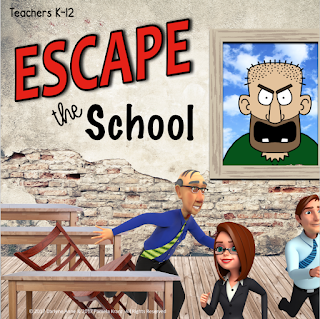Motion- A Different Kind of Science Fair
‘Tis the season for science fairs- a time for kids to explore and learn about something they’ve always wanted to know. For parents, that often means a frantic midnight run to the local grocery store for poster board, vinegar and baking soda. You know where I’m going with this, don’t you...
Back at the turn of the century, I worked in an at-risk school (actually, for most of my teaching career). What I discovered was, if we wanted quality products from the kids, with real science learning, we’d have to let the kids work on their projects at school, helping them with the concepts. And that’s what we did... once. Talk about chaos! Have you ever tried to manage 28 different science fair projects at one time? One word of advice- don’t do it! (OK, that was 3 words.) We had more projects, but I’m not sure the learning was up to the standards we were after.
The following year, we were four 5/6 multiage classrooms. The team got together and decided we needed more control, while still giving students a choice. Each of us would take a particular area of science we felt would give students a broad choice, while giving us some control. (My mantra: Give them choices you can live with!) Areas included were building toothpick bridges, sound (invent a new instrument), motion (marble roller coasters), and solar energy/insulation.
Each teacher would focus on one of the four areas. We brought all the kids together and gave them our best sales pitches for our particular area of study. Solar energy was the hardest sell, but we wanted to balance the classes. (Guess which one everyone wanted to be in... Pop quiz at the end.) For two weeks students would spend the afternoon in the “lab” of their choice where we presented background information, set up explorations for those areas and gave students time to work on their individual projects.
Both bridge building and roller coasters were team efforts- 3 to 4 in a team, with certain criteria they had to meet. Sound was very fun because students not only had to invent a new kind of instrument, they had to play a song they’d made up for that instrument. Solar energy group had to build an insulated container that kept an ice cube from melting or speed up the melting.
On the day of the actual “science fair”, all groups presented their final projects, one area at a time. The other groups watched the bridge engineers test the strength of their structures. Everyone loved it when the bridges came crashing down, finally unable to withstand more weight. The marbles had to stay on the roller coasters while making creative twists and turns. The instruments presented quite the cacophony of sound (we had an “orchestra” for the finale). As far as insulating the cubes, the solar “houses” handled the challenge well. They definitely needed more work, if Frosty the snowman and his family wanted to move in, however. Melting was easy.
 |
| Teams named their coasters |
All in all, we teachers were still exhausted by the end of the day, but in a good way. Students were able to share their new understandings with others who didn’t do those particular projects- including what worked, what didn’t. We had control over their learning of the concepts. Everyone was happy.
OK, now for the pop quiz. Which project do you think everyone wanted to participate in? Yep, roller coasters. Bridges were a close second. Because of that, our science fair morphed one more time, becoming Motion Fair, with Laws of Motion as our guide.
Since we were no longer multi-age, fifth grade became the visitors to our final roller coaster presentations, giving them something to look forward to the next year. It was from this point on I taught science for sixth grade, so Motion Fair was going to be a permanent fixture. In addition to the roller coasters-still a team effort, students had to pick one more category to participate in. (I was still wanting them to have a choice.) We had mini-hovercrafts and Monster Wheels (made from pencils, paper plates and eraser tips with pennies for weights). My favorite part of all this was how engaged everyone was as they tested their designs, made improvements and fine-tuned their products.
 |
| Competition Day in the Lunch Room (Monster Wheel on the right) |
Note: I tried finding the book I used as the basis for our roller coasters. It’s called Crazy Coasters Marble Roller Coasters by T.G. Jones. The PDFs for the lessons show up on the internet, but I haven’t been able to find the book. There are some good YouTube videos showing the coasters, but the book gives all the details, several labs and a suggestion for presentations.
"If I have ever made any valuable discoveries, it has been owing more to patient attention, than to any other talent." Isaac Newton




Comments
Post a Comment